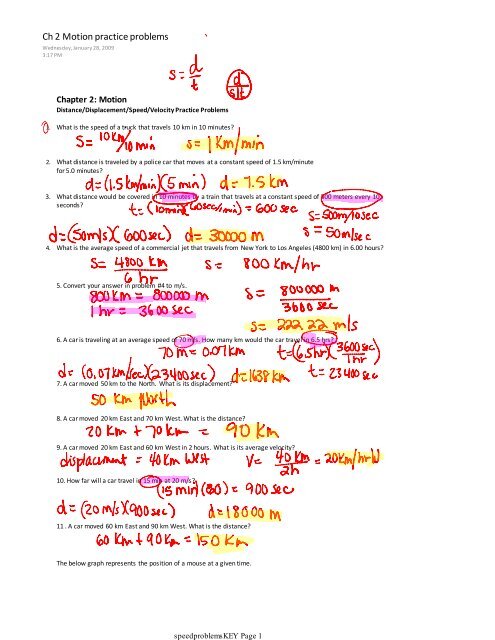

Read : Volume expansion – problems and solutionsħ. Motion 3: Object decelerated for 10 seconds until rest. Motion 2 : Object travels during 5 seconds until it’s velocity = 10 m/s. Motion 1 : Object travels at a constant 5 m/s in 10 seconds. Deceleration (a) and time interval (t) calculated using data of motion 3. Time interval calculated after find deceleration. The final velocity of motion 2 calculated using data of motion 2 :įinal velocity for motion 2 (v t) = initial velocity for motion 3 (v o) = 10 m/s Initial velocity (v o) = velocity in motion 1 = 5 m/s

Motion 2 = motion at constant acceleration Which graph (v-t) shows the object’s travels. Then decelerated until rest after car travels 137.5 meters. A car travels at a constant 5 m/s in 10 seconds, then accelerated 1 m/s 2 in 5 seconds. Read : Optical instrument microscope – problems and solutionsĥ. Motion 3: Object decelerated in 10 seconds until rest. Motion 2 : Object accelerated in 10 seconds until it’s speed = 20 m/s. Motion 1 : Object travels at a constant 10 m/s in 5 seconds Wanted : which graph shown object’s travelsįinal velocity of motion 2 (v t) = initial velocity of motion 3 (v o) = 20 m/s Initial velocity (v o) = velocity in motion 1 = 10 m/s An object travels at a constant 36 km/hour during 5 seconds, then accelerated 1 m/s 2 during 10 seconds and then decelerated 2 m/s 2 until rest. Area formulas for each shape are given below.Read : Optical instrument telescopes – problems and solutionĤ. The method used to find the area under a line on a velocity-time graph depends upon whether the section bound by the line and the axes is a rectangle, a triangle or a trapezoid. This area takes on the shape of a trapezoid can be calculated using the appropriate equation. The shaded area is representative of the displacement during from 2 seconds to 5 seconds. This area takes on the shape of a triangle can be calculated using the appropriate equation. The shaded area is representative of the displacement during from 0 seconds to 4 seconds. This area takes on the shape of a rectangle can be calculated using the appropriate equation. The shaded area is representative of the displacement during from 0 seconds to 6 seconds. The diagram below shows three different velocity-time graphs the shaded regions between the line and the time-axis represent the displacement during the stated time interval. For velocity versus time graphs, the area bound by the line and the axes represents the displacement. In this part of the lesson, we will learn how a plot of velocity versus time can also be used to determine the displacement of an object. As learned in an earlier part of this lesson, a plot of velocity-time can be used to determine the acceleration of an object (the slope).


 0 kommentar(er)
0 kommentar(er)
